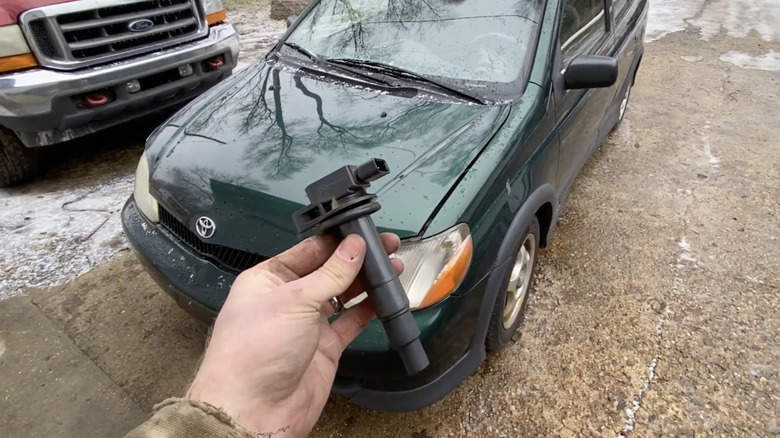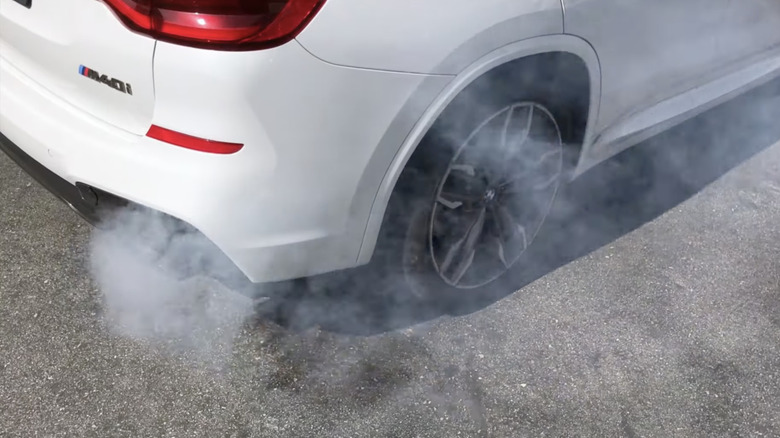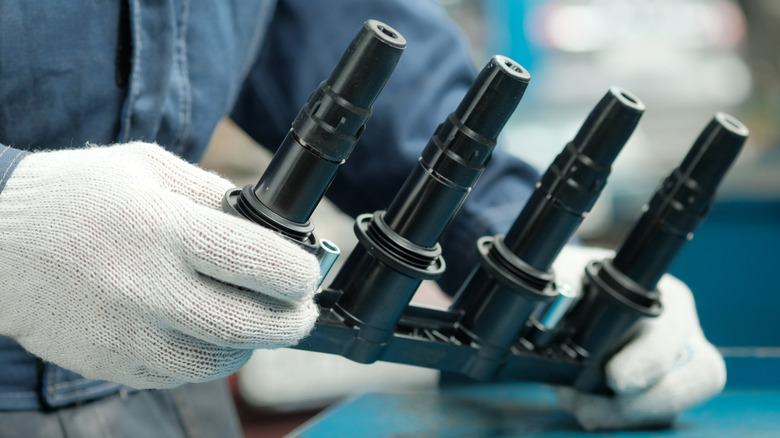What Is A Coil Pack And What Happens When One Goes Bad?
Every gasoline engine is basically a series of controlled explosions, and the coil pack is the component that lights the fuse. Your car's battery puts out a measly 12 volts, which is great for your radio but nowhere near enough to create the massive spark needed to ignite fuel. That's where the ignition coil steps in. It basically acts as a step-up transformer that takes the low voltage and cranks it up to as much as 45,000 volts. This is then sent to the spark plug, which in turn ignites the air and fuel mixture in the engine's cylinders, producing the power that moves your car.
Making the process possible is, as usual, a clever bit of physics. A coil exploits the principle that a changing magnetic field can induce a voltage. It contains two sets of copper wire windings wrapped around an iron core to put this into practice. A low-voltage current in the first winding creates a magnetic field. The car's computer then cuts the power for a moment, which makes the magnetic field collapse. This sudden collapse is the key, as it induces a high-voltage surge in the secondary winding, which has thousands more turns of wire to amplify the power dramatically.
The tech has evolved quite a bit over the decades. Older cars up until the '80s used a single coil connected to a mechanical distributor that routed the spark to each cylinder. Meanwhile, modern cars use electronic ignition systems controlled by a computer, which are far more precise. Most now also have a dedicated coil for each spark plug in what's called a "Coil-On-Plug" (COP) setup, which ditches the need for spark plug wires entirely.
What happens when a coil pack goes bad?
A coil pack is an essential component, so when it starts to fail, your car will definitely let you know. The most common symptom is an engine misfire. This is when one or more cylinders fail to fire correctly, making your engine stutter, shake, or jerk while idling or accelerating. This often leads to a noticeable loss of power, making your car feel unresponsive, especially when you need to accelerate. You might also find it difficult to start your engine, particularly when it's cold, because the coils simply can't generate a strong enough initial spark.
There are other clues, too. You might hear a loud popping sound from your exhaust, which is the engine backfiring. This happens when unburned fuel from a misfiring cylinder gets dumped into the hot exhaust system and ignites. That unburned fuel can also create a distinct smell of gas coming from the exhaust pipe.
Even your wallet will feel the problem when the fuel economy falls! That's because the engine tries to compensate for the power loss by injecting more fuel, leading to more frequent trips to the pump. Most cars nowadays will trigger the engine light when these problems start. Ignoring them is a bad idea, as they can damage your expensive catalytic converter over the long run.
What to do when a coil pack goes bad
The good news is that if a coil pack goes bad, you don't necessarily need to rush to a mechanic. Replacing a coil is often a surprisingly straightforward DIY job. The process typically involves locating the coils on top of the engine, disconnecting the battery, unplugging the faulty coil's electrical connector, removing a single bolt, and then simply pulling the old coil out and seating the new one. Doing so saves you money, too, considering a trip to the shop for a replacement could set you back anywhere from $200 to over $300.
Preventing premature failure mostly comes down to basic maintenance. Coils live in a hot, vibrating engine bay, and over a long enough timeline (often up to 150,000 miles), they will eventually wear out. However, the biggest enemy of a coil pack is a worn-out spark plug. Old plugs with a wider-than-spec gap force the coil to generate a much higher voltage to create a spark, causing it to overheat and fail early. Sticking to your car's recommended spark plug replacement schedule is the best way to extend the life of your coils.


